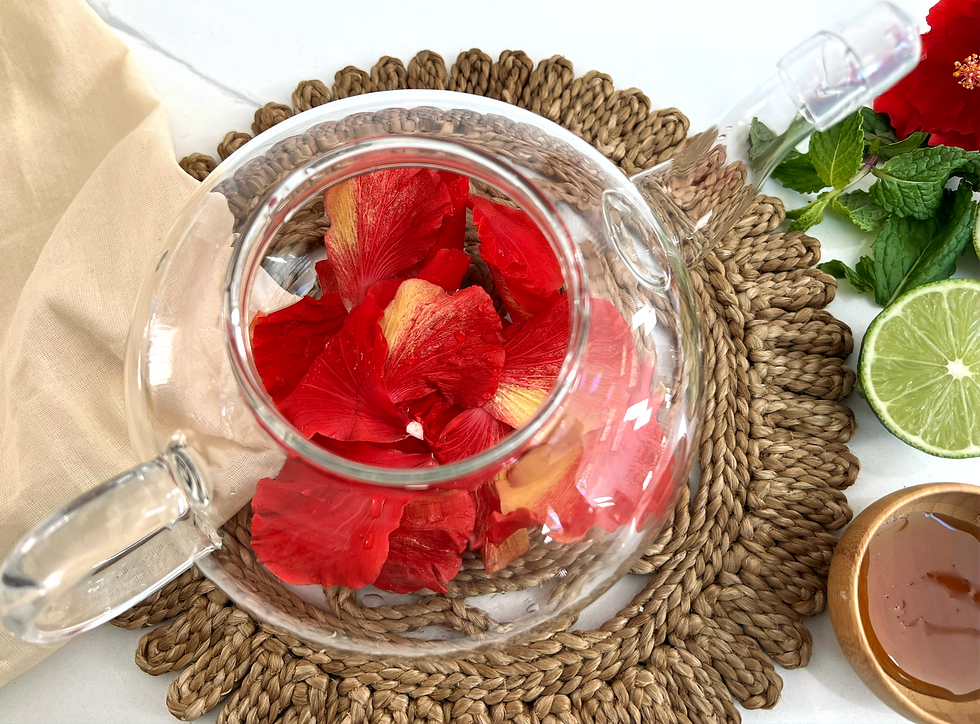Flower Power: Hibiscus Tea
- Shruti
- Oct 8, 2022
- 3 min read
Updated: Oct 10, 2022

Hibiscus tea, either brewed of fresh flowers or dried ones, is a great beverage to improve your health. Hibiscus tea has been popular for centuries around the world. There are a variety of Hibiscus plants. Not all Hibiscus plants are edible. Most of the hibiscus varieties are ornamental. Roselle (Hibiscus sabdariffa), Cranberry hibiscus (Hibiscus acetosella), and Chinese hibiscus (Hibiscus rosa-Sinensis) are traditionally used for medicinal purposes. Hibiscus flowers possess a broad range of medicinal properties. Hibiscus flower petal contains several phytochemical compounds, such as flavonoids, alkaloids, saponins, tannins, and polyphenols. Hibiscus tea is a powerhouse of antioxidants. Within an hour of consuming it, it increases the antioxidant level of blood.
I make my fresh ruby red, tangy, healthful cup of tea using Chinese hibiscus due to the abundance of this variety around me. If fresh hibiscus is unavailable around you, go for store-bought hibiscus tea. Hibiscus tea, what you find in stores, is usually dried roselle (Hibiscus sabdariffa) calyx. That is an excellent, hassle-free option for a health-conscious tea drinker.
Why add hibiscus tea to your diet?
Caution:
1. Those who suffer from hypotension should not consume hibiscus tea since it may lower their blood pressure further. (17)
2. During pregnancy, it is not recommended to consume hibiscus tea because it is associated with the termination of pregnancy (16)
Serves – 2
Preparation time: 5 mins
Brewing time: 10 min
Total time: 15 min
Ingredients
Hibiscus flower – 4
Lemon juice- 1 tbsp
Mint leaves – 5-6 ( optional)
Honey – 2 tsp
Directions
1. Remove petals from hibiscus flowers. Rinse it with water to remove dirt.

2. Keep the petals in a kettle or saucepan.

3. Add 2 cups of boiling water to the kettle and cover it.
4. Let it steep for 10 mins.

5. Add lemon juice and honey.
6. Enjoy

(Note - You can also add mint leaves /lemongrass as per your taste)
References:

Comments